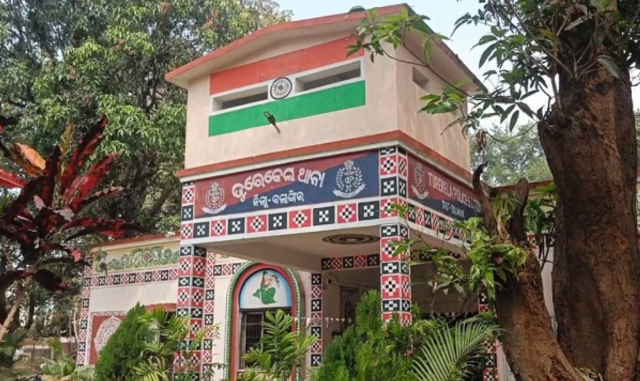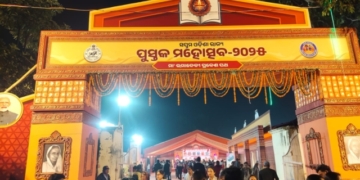The 25th edition of the Dhenkanal Heritage Walks (DHW) took place yesterday, featuring a trail around the Manipur Village and the Radhakanta Jew Temple.
Approximately 50 participants from across Odisha joined the exploration, which began with a visit to the holy shrine of Lord Radha Krishna. The brass idol, brought from Nadia in the early 20th century, was accompanied by a giant “mrudanga.”
Dhenkanal district, located centrally in Odisha, derives its name from the former tribal king Dhenka Sabar. Similarly, the village of Manipur, where the Radhakant Jew was moved to the newly-built temple premises in 1937, is named after “mana,” a local measuring instrument. The fertile land in Manipur has been believed to never run short of grains, hence the name, indicating that no “mana” will ever measure an empty store of food grains. Historically, Dhenkanal was densely forested, with 58 per cent of its land covered by trees. Manipur boasts fertile land and ample water resources, supporting agriculture and related activities.
At the Manipur temple premises, participants gathered for discussions on the origins of the village’s name, temple history, and the rituals observed at the temple. Convener Suresh Prasad Mishra welcomed everyone, setting the stage for an insightful exchange with senior members of the village and temple committee. Village president Prakash Chandra Mallik spoke about the temple’s history and heritage, noting that it was built by the villagers with prominent figures such as Gopinath Sangram Singh and Sridhar Mangaraj playing key roles in its construction. The temple walls feature few “parshwadevata,” except for goddess Saraswati. Professor Durga Biswal highlighted the unique architectural style of the temple, which does not adhere strictly to either the “Khakra” or “Rekha” styles typical of Kalingan architecture, but rather shows influences from Bengali Krishna temple designs.
The temple priest, Rabinarayan Debata, discussed the divine and supernatural aspects of Radhakant Jew, who is believed to have saved villagers from water and health issues. The session concluded with a vote of thanks from founder member Dr. Malay Pati. Among the participants in the 25th DHW was a 1929 Baby Austin car, which is still operational today. Its owner, Saranath Mishra, hails from a heritage-rich family in Dhenkanal city and brought the car along for the event. For both the walkers and the villagers of Manipur, the Baby Austin was a notable attraction during the walk.
The group then returned to Sadeibareni, known as an artist village for Dhokra work. This time, however, they visited not to observe the craftsmanship but to enjoy Dhenkanal’s heritage food—”bara” prepared at a local shop. Biswaranjan Dehury, convener of Odisha Heritage Walks, shared information about how heritage walks are regularly conducted in Cuttack, Puri, Jagatsinghpur, Balasore, and Baripada by various heritage enthusiast groups under different banners.






























